Oil
-
Chinese economic reopening may lead to a jump in oil demand. Chinese authorities issued additional batch of oil import quotas for domestic refiners
-
On the other hand, Chinese oil inventories have already surpassed those of the United States, mainly thanks to a crude oil storage on water
-
Global crude stockpiles on water at extremely high levels compared to historical records. However, they are still below levels from beginning of Covid-19 pandemic when prices dropped to extremely low levels
-
Simultaneously, run rates in Chinese refineries in Shandong region sits below historical averages, meaning that oil demand is yet to reacted to Chinese reopening
-
Goldman Sachs expects oil prices to climb to $105 per barrel by the end of 2023
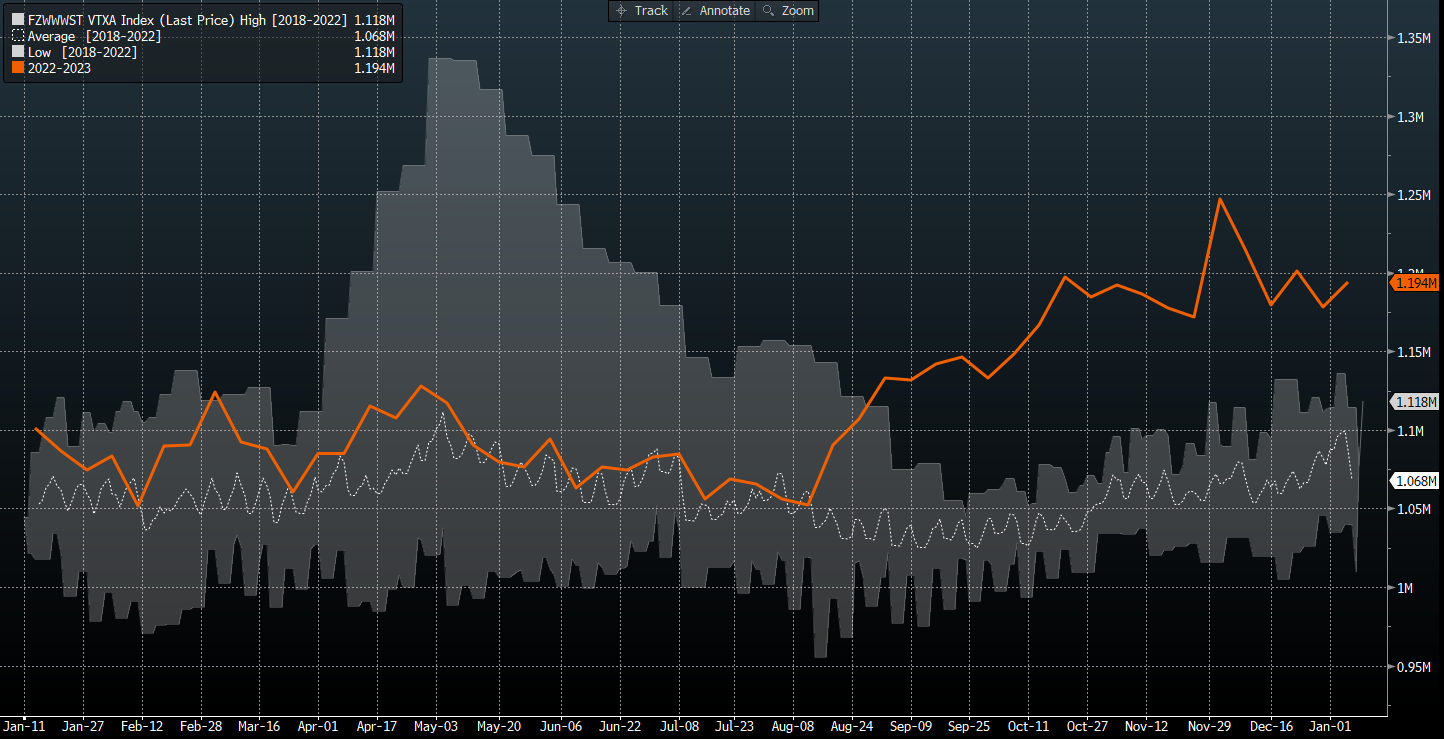 Amount of oil stored on water globally is at very high in terms of historical standards but below levels from the early phase of Covid pandemic. Source: Bloomberg
Amount of oil stored on water globally is at very high in terms of historical standards but below levels from the early phase of Covid pandemic. Source: Bloomberg
Start investing today or test a free demo
Create account Try a demo Download mobile app Download mobile app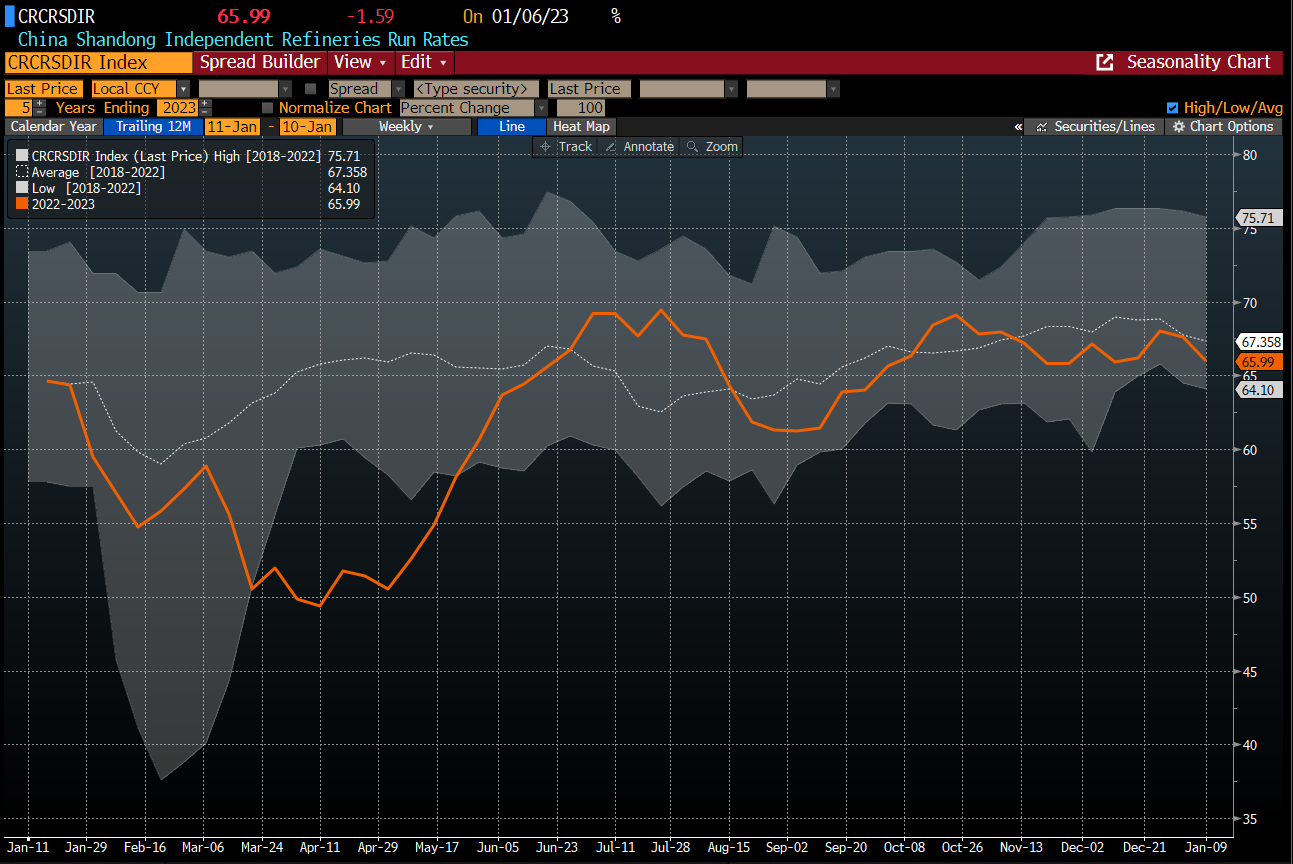 Run rates in Chinese refinering are more or less in-line with historical averages for the period. Source: Bloomberg
Run rates in Chinese refinering are more or less in-line with historical averages for the period. Source: Bloomberg
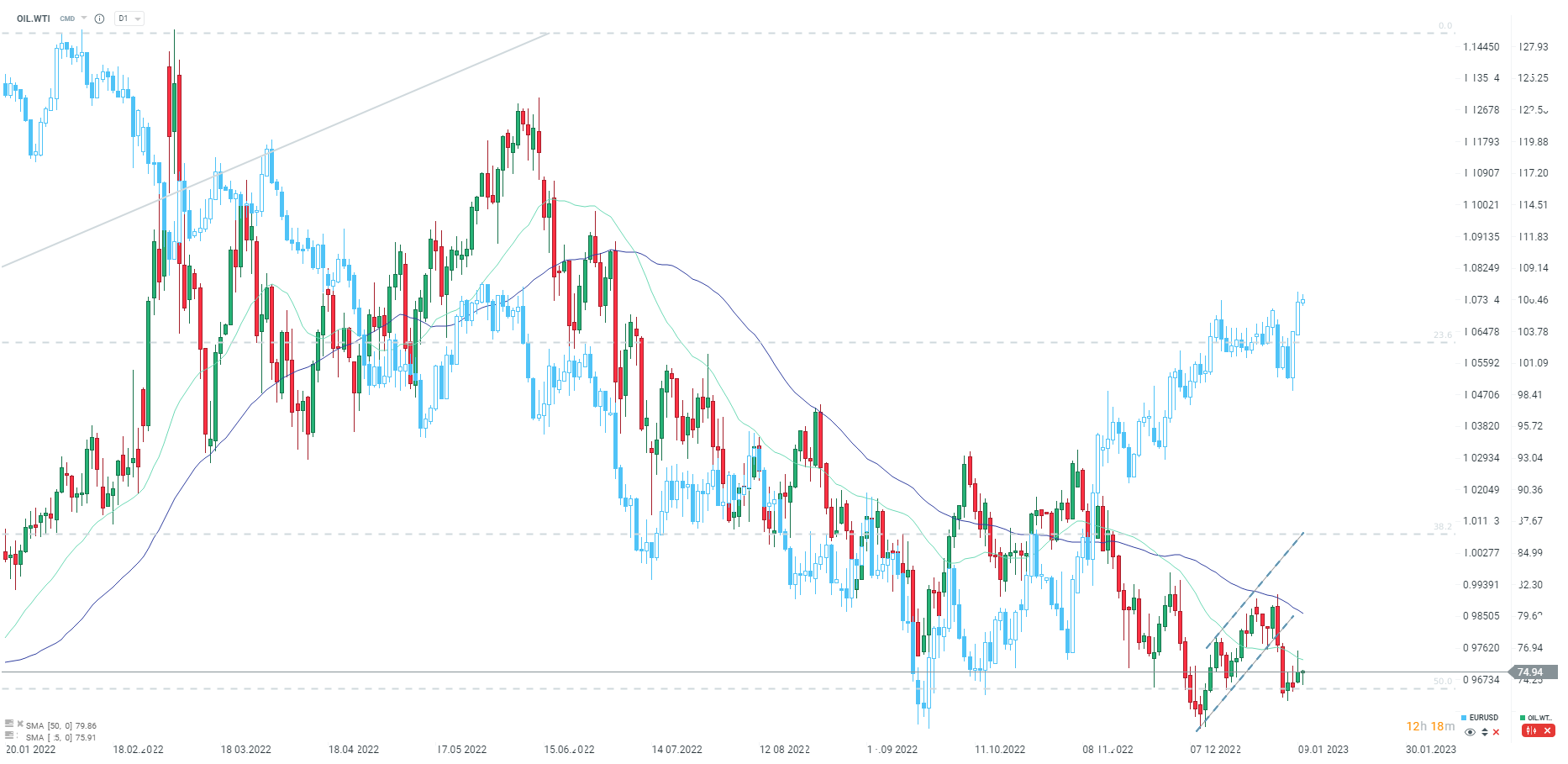 Oil prices remain at depressed levels but one should remember that the United States plans to start replenishing strategic reserves when prices drop below $70 per barrel. Simultaneously, oil continues to diverge from USD. Source: xStation5
Oil prices remain at depressed levels but one should remember that the United States plans to start replenishing strategic reserves when prices drop below $70 per barrel. Simultaneously, oil continues to diverge from USD. Source: xStation5
Natural Gas
-
US gas prices hold below $4 per MMBTu as above-average temperatures persist in the United States
-
Sudden winter attack that the United States have experienced over the Christmas period did not lead to a significant increase in gas consumption
-
Seasonal patterns point to a local peak at the end of the next week and drop resuming later on
-
Taking a look at gas prices from a technical point of view, we see a chance for drop to deepen to 78.6% retracement of major upward impulse from the past two years
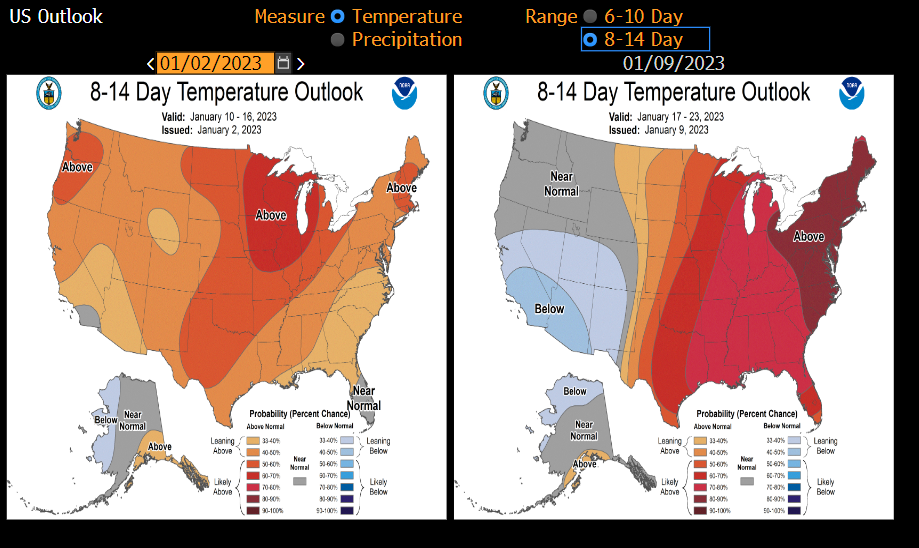 Current weather in the US remains solid. Forecasts for the second half of January point to high temperatures persisting, which should lead to lower gas consumption. Source: Bloomberg
Current weather in the US remains solid. Forecasts for the second half of January point to high temperatures persisting, which should lead to lower gas consumption. Source: Bloomberg
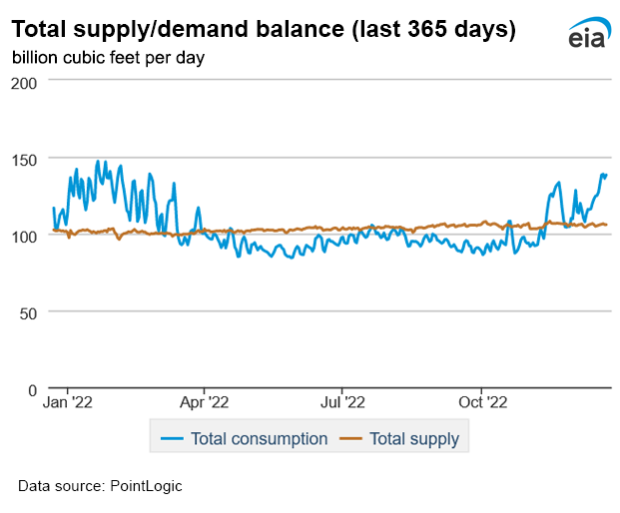
Demand-supply balance shows increased gas consumption in the second-to-last week of December 2022. However, it is already a history for the markets and prices are more likely to react to new weather forecasts. Source: EIA
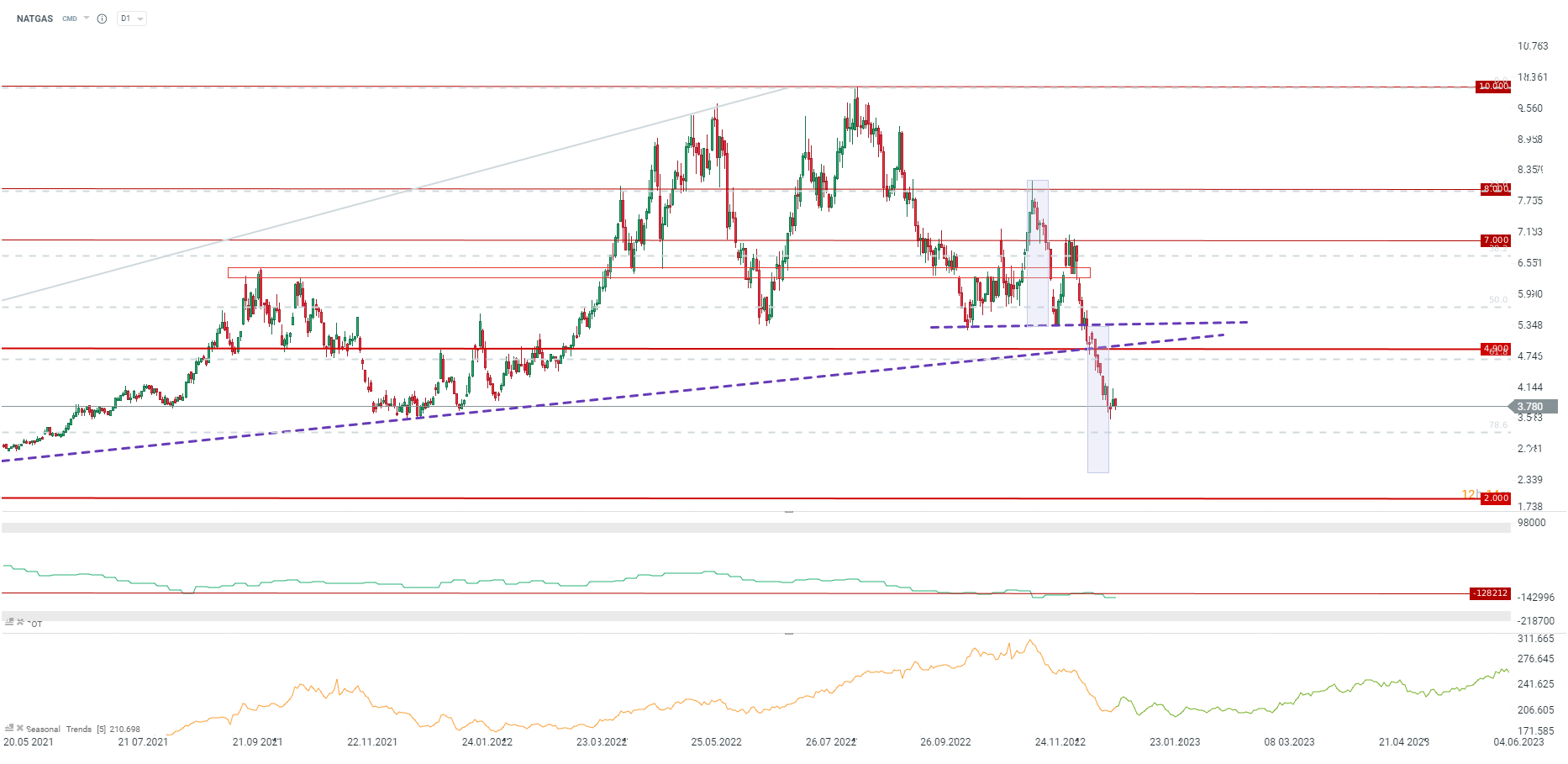 Prices bounced on January 6, 2023 off the local lows from the turn of 2021 and 2022. Textbook range of the head and shoulders pattern point to potential declines to as low as $2.50 per MMBTu. Source: xStation5
Prices bounced on January 6, 2023 off the local lows from the turn of 2021 and 2022. Textbook range of the head and shoulders pattern point to potential declines to as low as $2.50 per MMBTu. Source: xStation5
Copper
-
Copper prices break out of a trading range and readies for an attack on $9,000 per tonne area
-
Goldman Sachs changed its copper price forecast for 2023 from $9,000 to $11,000 per tonne
-
Copper stockpiles on world's largest exchanges sit at extremely low levels. However, situation in 2022 was similar
-
A rebound in Chinese credit impulse can be observed. However, it should be noted that it affects economy with a significant lag
-
An increase in the number of loans may lead to higher use of copper as collateral. It would remove part of available copper supply from the market
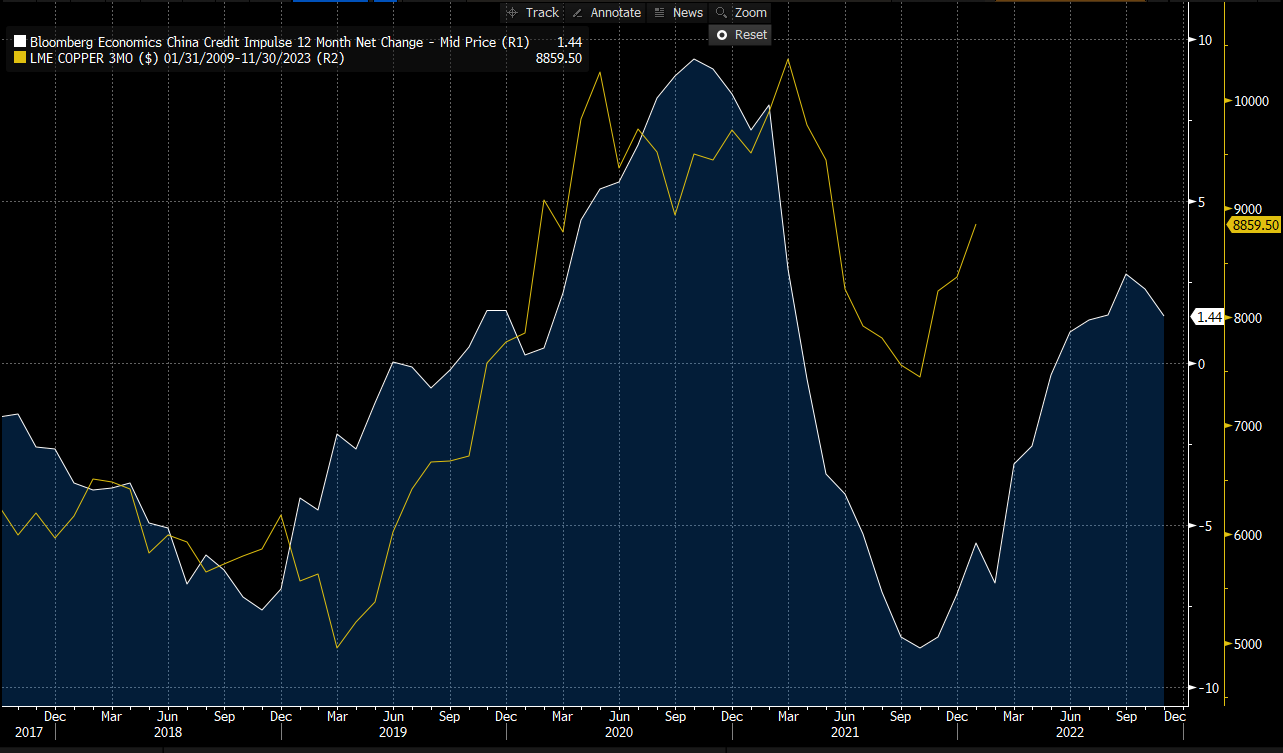
Chinese credit impulse (12-month leading indicator) bounced off the late-2021 low. However, it remains relatively low in terms of 12-months net change. Should it hold on the current levels, it would justify copper price at around $8,000 per tonne. However, base effect and expected actions of Chinese authorities suggest that credit impulse will continue to improve in the coming months. Source: Bloomberg
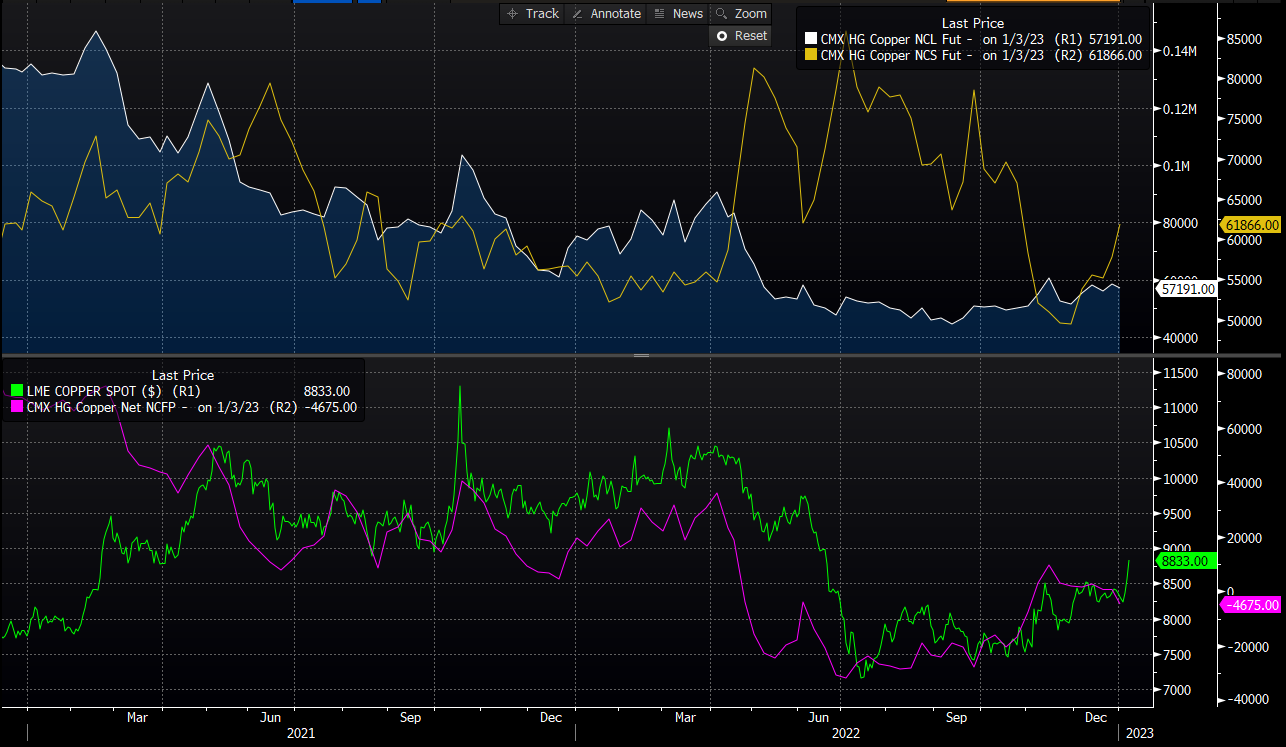 A number of open short positions on copper have picked up significantly at the turn of 2022 and 2023. Net position remains negative. Rebound in the number of open long positions in the coming weeks could hint at the beginning of a new trend on the copper market. Source: Bloomberg
A number of open short positions on copper have picked up significantly at the turn of 2022 and 2023. Net position remains negative. Rebound in the number of open long positions in the coming weeks could hint at the beginning of a new trend on the copper market. Source: Bloomberg
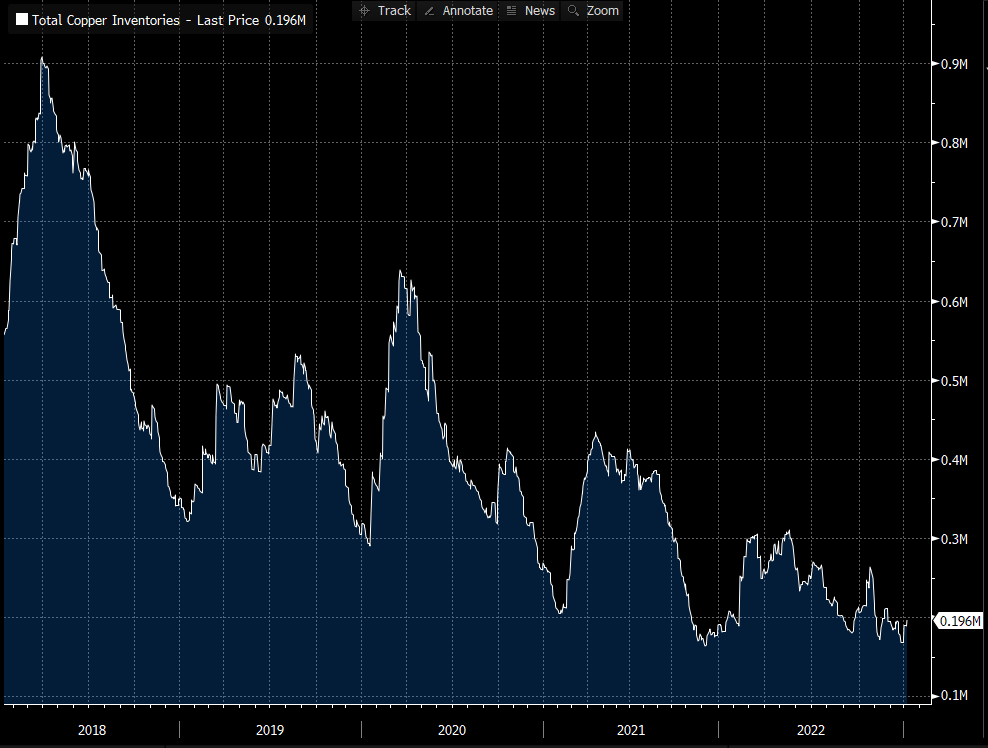 Copper stockpiles on global exchanges remain at extremely low levels. Source: Bloomberg
Copper stockpiles on global exchanges remain at extremely low levels. Source: Bloomberg
Gold
-
Gold had a stellar start of the year, mostly thanks to a weaker USD and outlook for continuation of significant gold purchases by central banks
-
Speculators become more and more active on the market - number of open long positions increased moderately while the number of open short positions dropped
-
ETFs have been passive when it comes to gold purchases/sales at the beginning of the year
-
Central banks and other institutions purchased almost 400 tonnes of gold in Q3 2022, what is the largest quarterly increase on the record
-
Central banks purchased an additional 100 tonnes of gold in October and November, including 30 tonnes purchased by China. However, it is said that real number for China is closer to 200 tonnes of gold
-
Central bank purchases offset negative impact ETF gold sale have on investment and central bank demand balance in Q3 2022
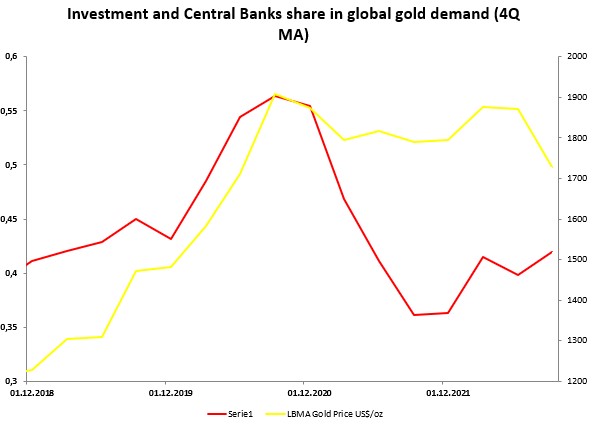
Share of investment and central bank demand in total gold demand is increasing. Given significant purchases of gold by central banks at the end of the previous year, this share may continue to increase. Source: Bloomberg, XTB
This content has been created by XTB S.A. This service is provided by XTB S.A., with its registered office in Warsaw, at Prosta 67, 00-838 Warsaw, Poland, entered in the register of entrepreneurs of the National Court Register (Krajowy Rejestr Sądowy) conducted by District Court for the Capital City of Warsaw, XII Commercial Division of the National Court Register under KRS number 0000217580, REGON number 015803782 and Tax Identification Number (NIP) 527-24-43-955, with the fully paid up share capital in the amount of PLN 5.869.181,75. XTB S.A. conducts brokerage activities on the basis of the license granted by Polish Securities and Exchange Commission on 8th November 2005 No. DDM-M-4021-57-1/2005 and is supervised by Polish Supervision Authority.

